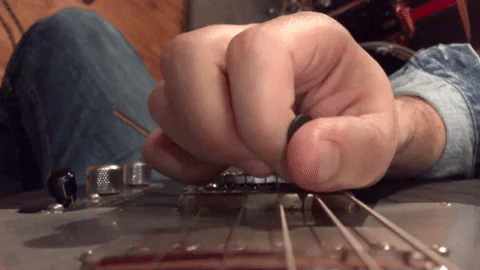Hi there, my name is Gary. I’ve been playing for somewhere around 10 years, but maybe the last 3 have been filled with frustration due to lack of speed and progress from practice. I even stopped playing for a while in there as a result.
I really like very fast metal and rock - like many here, I’m sure, it’s always been my dream to shred through any phrase imaginable, and play as cleanly as possible.
I am self-taught, and obsessed over my picking technique over and over trying to improve. I would watch Paul Gilbert videos, trying to glean what bits I could to make a difference. Ultimately, none of it mattered and I was stuck. We all know how horrible it feels.
After discovering this excellent investigation, I have realized I deliberately kept my pick in a relatively no-slant orientation, and would never have given swiping a chance thinking it was “wrong”. Basically, I imprisoned my pick without even realizing I was doing it. Bummer. I thought I was using perfect technique and it was a matter of time…
The primer hit me like a truck. Pickslanting - what a powerful factor that /must/ be exercised to attain speed in a consistent fashion! It immediately made me more comfortable on phrases I could already play, just by /letting/ myself downslant and then rotate my wrist for downstroke escapes!!! Elation.
However, I think I’ve learned something more useful along the way - and that is to experiment, and take what actually works away. Physical motions are notoriously hard to do consciously, let alone describe. The book “the inner game of tennis” explores this at a much less scientific level, but resonates extremely well with this content. Physical motion/technique coaching, in my opinion, is a tricky area that cannot achieve consistent results for every individual without approaches like those taken here.
I was trapped by an idea of what fast playing looked like, and felt like. Turns out, I was as far off as I could be. By closing my mind off, I robbed myself of any ability to free my hands to explore better ways of doing things.
Thank you for creating this content, and enabling me to foster a mentality that can drive real progress, instead of banging my head against a wall hoping for things to magically come together.
The best moments in life are realizing how utterly lost you were before, and how well equipped you are to adapt to situations to come! What a time to be alive.

